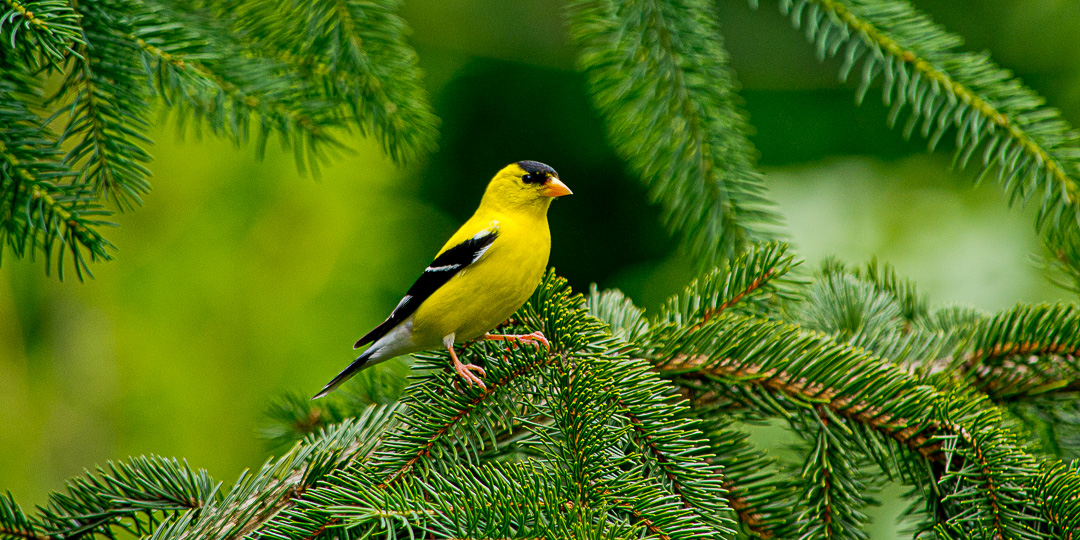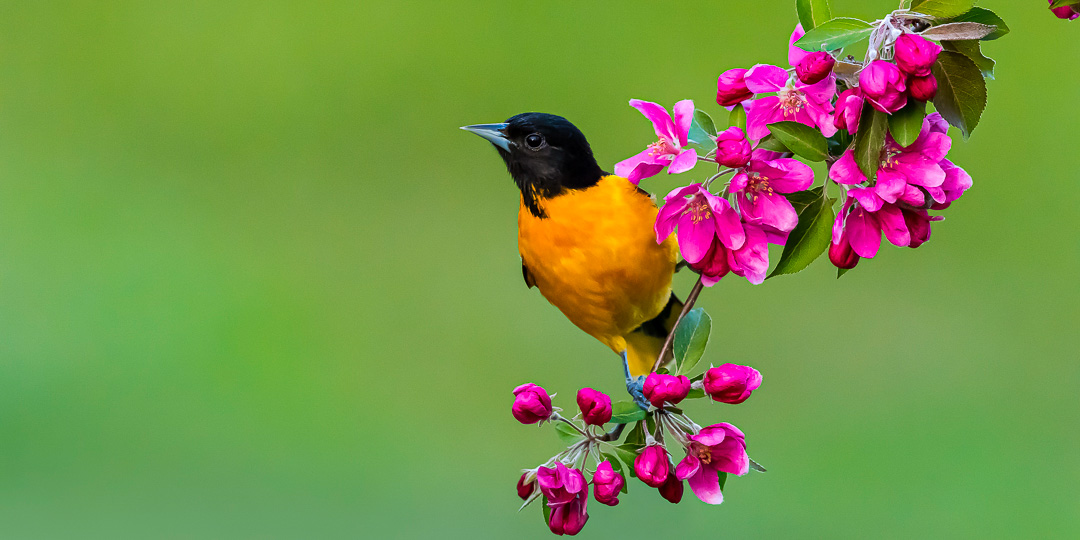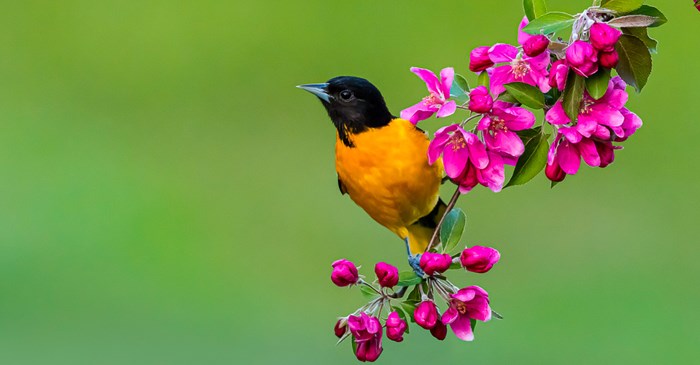Those who live along the Eastern Seaboard are in for some prime bird viewing in the spring and fall. Whether you head out with a list and binoculars in hand or you keep a casual eye out for songbirds, migration season is your best opportunity to see something new and colorful.
Some 500 bird species use the Atlantic Flyway in the fall and the spring. Spring migration along the Atlantic Flyway is briefer and more intense than fall. The birds are anxious to reach their breeding grounds. They’ll want to nab a prime nesting site and pair with a healthy mate. So if you’re one to keep your eyes and ears open for noteworthy birds, spring presents a brief but chock-full-of-birds opportunity.
You may see migrating birds congregating by the hundreds and thousands in fields and beaches as they stop for an energy break.

American Goldfinch | DoucetPh / iStock/ via Getty Images
Where is the Atlantic Flyway?
The Atlantic Flyway spans more than 3,000 miles along the Atlantic coast of North America. In the spring, the migration route originates from the tip of South America and ends in the Canadian Arctic. Like a railroad system, birds aren’t traveling the full length of the flyway. Some may travel a few hundred miles, while others are intercontinental travelers.
The habitat along this route, with its coastal wetlands, beaches, fields, and forests, provides ample food sources for the songbirds and shorebirds that are making their way.
Another influence on the Atlantic Flyway is the Appalachian Mountains. The obstruction prompts birds to veer to the east, funneling them along this seaside path.

Which states are in the Atlantic Flyway?
In the U.S., the Atlantic Flyway encompasses 17 states along the Eastern Seaboard:
- Connecticut
- Delaware
- Florida
- Georgia
- Maine
- Maryland
- Massachusetts
- New Hampshire
- New Jersey
- New York
- North Carolina
- Pennsylvania
- Rhode Island
- South Carolina
- Vermont
- Virginia
- West Virginia
What birds are in the Atlantic Flyway?
In spring migration, you may see the return of some of your feeder favorites, such as the American Goldfinch and the Baltimore Oriole. In fall, you’ll see winter arrivals returning from Canada, such as the Dark-eyed Junco. Here are a few highlights to watch and listen for as we transition into the equinox.
- Blue Grosbeak: Males tend to choose a high perch to sing their burry songs. Learning what to listen for will give you your best chance of catching a glimpse at their bright blue plumage.
- Eastern Meadowlark: Their sweet whistling song is a sure sign of spring, especially for those who live on rural farmland.
- Eastern Towhee: With their rust-colored bellies, the Eastern Towhee is sometimes referred to as “ground robins.”
- Evening Grosbeak: These stout, handsome yellow birds sometimes fly south from Canada for the winter to take advantage of better food sources.
- Purple Finch: In the fall, the Purple Finch returns from Canada, to make its winter home in the U.S.
- Ruby-throated Hummingbird: Its arrival is quite the event for backyard enthusiasts as this is the only hummingbird species that consistently breeds in the Eastern U.S.
- Yellow-rumped Warbler: For northeastern bird lovers, keep an eye out in the spring for their striking yellow plumage — in its full glory after their molt.

Baltimore Oriole | Pchoui / iStock / via Getty Images
What to feed birds traveling the Atlantic Flyway?
Migrating birds along the Atlantic Flyway can be helped by bird-loving humans who keep their feeders clean and filled, with plenty of fresh water.
Look for birdseed mixes with generous allotments of black-oil sunflower seeds, energy-dense nuts, and pieces of fruit. Lyric Fruit & Nut Mix contains a gourmet blend that attracts a crowd of colorful visitors.
